|
St
Peter's Road
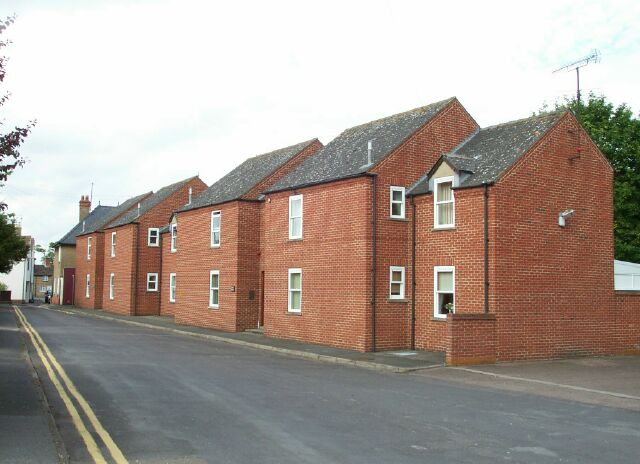
This
short
stretch of road just off West Street is barely 200 yards long
and was important in years past only because it led to the Bourne Union,
or workhouse, later St Peter's Hospital from which it takes its present name.
The hospital was demolished during the summer of 2001 and is now the site
of a new printing and binding plant for Warners Midlands plc and so the road leads nowhere, except to
a back entrance of the
Wellhead Gardens.
There
are several old properties in the lane, mostly Victorian and Edwardian
houses and bungalows, although there is also a block of eight council
flats on the left as you walk up. They were built in 1982 at a cost
of £175,000 despite protests from local people that they would have
preferred six flats only on the site and the rest of the space devoted to
car parking which has been excluded from the current development and so
vehicles are parked at the kerbside for long periods.
|
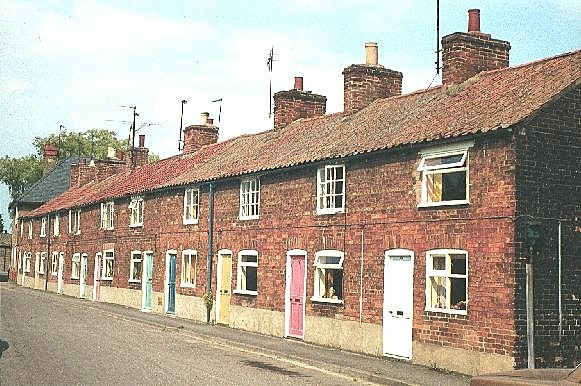 |
|
The terrace of old cottages demolished in
1981 after being declared unfit for human habitation. |
|
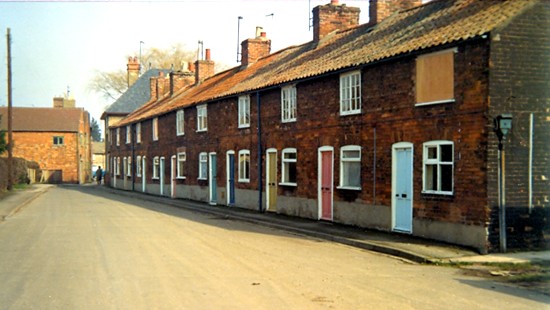 |
|
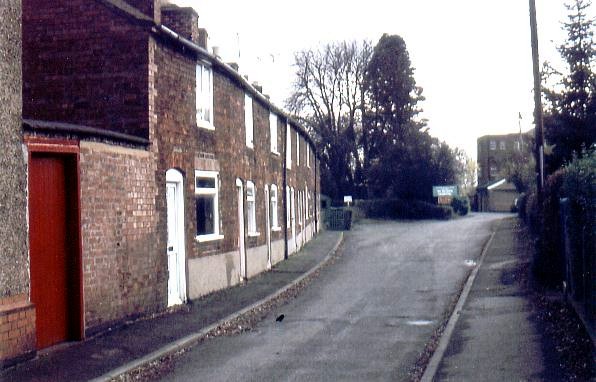 |
The
flats were built on the site of a row of early 19th century terraced cottages
that provided homes for hundreds of families in the town down the years.
They were small and cramped with few modern comforts and outside toilets
and generally considered to be defective in layout and appearance
but they were regarded with some affection and their demolition was seen as a sad loss to the town by many people, not least some of those
who were brought up here, for despite their drawbacks by today's
standards, these were the places that they called home.
|
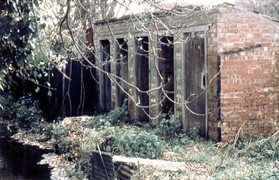 |
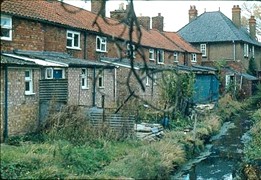 |
|
The outside lavatories or thunderboxes as they
were known, in the gardens behind the cottages in St Peter's Road,
usually with bundles of cut newspapers hanging inside the door in
lieu of toilet paper, and the later modern inside toilets built to
replace them. |
There were
eleven
cottages in the row, Numbers 3 to 23, built of red brick and blue slate, and
rented out over the years to working class families. The absence
of modern conveniences appeared not to have been a deterrent to
tenants because many couples lived there for most of their lives
and brought up large families and there were rarely any vacancies.
But increased vigilance by the local authorities during the late
20th century over health and housing regulations eventually
sounded their death knell and after being condemned as being unfit
for human habitation, they were acquired by South Kesteven District
Council through a compulsory purchase order.
Their future was the subject of several meetings of the housing committee
and since modernisation was not viable because of the cost, it was
suggested that either the site be landscaped as an open space or that
eight or nine two-bedroom houses might be built there. But in 1978, the
committee decided that the best solution was replacement housing and the
cottages were demolished in September 1981 to make way for the new
flats with all modern conveniences that were completed the following year.

|
FOND MEMORIES OF THE
COTTAGES
NEWLY-WEDS Trevor and
Winifred Pool began their married life at No 5, formerly occupied by
Trevor's Aunt Ethel who had been allocated an almshouse, and they
moved in on 21st December 1946. Trevor, who went to live and
work at Halifax, Yorkshire, later remembered these years with some
affection:
The accommodation was
very basic by today's standards, two up and two down with a lean-to
erected by my aunt which extended up to the coal shed which we
shared with an odd rat or two. The ceilings were very low and I know
that when my hair touched that I needed a trim. But there were plus
points in having a low level house because you could take delivery
of the Sunday newspapers through the bedroom window and pay your
weekly bill to Mr Lane who brought them round at the same
time.
There was no mains water and the only tap was at the far end of the
row near the toilets which were shared by more than one cottage.
They were flush toilets in that you kept a bucket inside which you
filled from the river at the back and then tipped it into the pan
when you had finished. We always kept the toilets locked to prevent
others from using them but you were in trouble if you went out to
use them and forgot the key. The rent of the cottage was only half a
crown or 2s. 6d. a week and an extra 1s. 3d. for rates, a total of
3s. 9d. in old money.
I did make some improvements to the cottage before we left in 1953
by installing electricity and provided washing and cooking
facilities in the lean-to but because the cottage was one of the
furthest away from the mains water tap, the most important
innovation was to connect some ex-War Department high pressure hose
pipe between the mains supply and the river bed out the back. I
suppose this is what we would call an illegal act today but my
goodness, it did improve the quality of life.
However, the river might have looked clean and it was certainly an
ideal place to put bottles of milk and keep them cool in hot weather
but I never relished the idea of drinking river water which some
people had done in the past even though it was often the place to
deposit unmentionable liquids that found their way into it in the
mornings, especially as it was a long walk to the toilet block.
Nevertheless, they were happy days. |
|
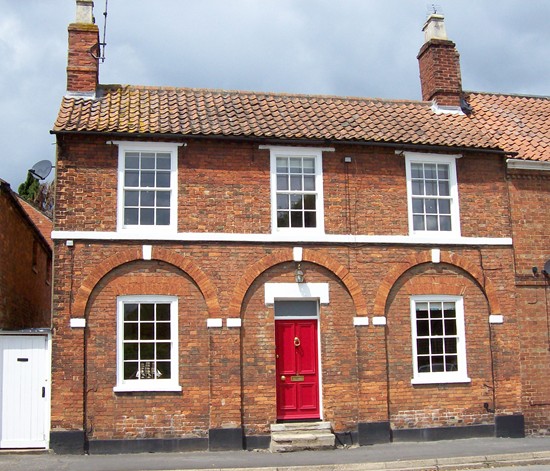 |
|
No 4 St Peter's Road is a Grade II listed
building from the early 19th century. It is built of red brick, most
probably manufactured locally, and has many internal features of
historic interest.
See
also Mswil House
|

Go to:
Main Index Villages
Index
|







